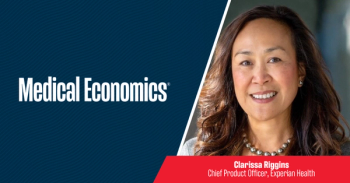
In 2024, technology will change primary care as we know it
Health care will become more about people, the way it should be
It is not uncommon for people to wait weeks or even months to see a health care specialist after visiting their primary doctor and being told that was the needed course of action to address their issue. For some insurance plans, this is the only process to see a specialist. Other plans allow consumers to see a specialist directly, but they have to be in a network. Health care plans, and in fact, the entire system has grown more complex over the years and people are left to maneuver as best they can with little or no guidance, or bear the sometimes unfortunate consequences of
Albert Einstein famously said, “If you can’t explain it to a 6-year-old, you don’t understand it yourself.” A person would be hard pressed to easily explain the U.S. health care system to a child. The multiple layers of regulations, insurance requirements, and the obstacle course in reaching the right doctor has prevented patients from receiving the immediate care they need.
Experts
Patients challenged with choosing the best treatment option and who are not clear on how to make a health care decision should be able to seek a timely medical second opinion without middlemen delaying that process. Second opinions give patients a better understanding of what is happening as well as a fresh perspective to help them navigate the best next steps.
Technology: The heart of the solution
As technology advances within every industry, including health care, and digital adoption continues to skyrocket post-pandemic, health care providers and the middlemen need to adapt to these changes. Every day, there have been new technologies introduced that can streamline the process.
For example, during the global pandemic, most primary care physicians found a way to shift a portion of their practices to serve patients who were seeking remote treatment. Doctors were able to easily adapt their skill sets and get on board with telemedicine. The switch to telemedicine provided direct access to patients who needed it most. This proved that you can receive quality information about your health care and connect with doctors using technology. These digital health platforms can ensure doctors have the correct patient information (i.e. medical records or data from the patient). This will help a doctor more quickly understand the patient leading to cost reduction and at the same time streamlining the process.
Generative AI and emerging technology have the potential to bring between
In broad terms, middlemen in any industry survive because of information asymmetry and the lack of knowledge. AI can help quickly fill the gap in information asymmetry by effectively matching patients and doctors across geographies that results in faster consultations.
By enabling easier access to global health care solutions, ChatGPT-4 also can help accelerate the creative thinking needed to resolve problems and ultimately benefit the entire health care ecosystem. With generative AI enhancements, doctors are going to be able to discover new solutions to health issues that have until now had limited treatments. This can lead to better outcomes for patients and contribute to advancing global healthcare.
We’re not there … yet
Even with the constant improvements of technology, the current American health care system is riddled with problems that lower the quality of care a patient can receive. According to
For example, people should be able to virtually visit a specialist without bank-breaking costs. This is possible by unlocking doctor availability which can help cost optimization for the patient population. This can happen only with the correct technology in place – such as data interoperability among platforms with a doctor’s calendar.
Technology enables more efficient patient/doctor consultations and may result in a healthier patient population. This has the potential to lead to less expenses for insurance companies as patients will adhere more to prescriptions and treatments. Non-prescription adherence is a major challenge for the entire country and this can be more effectively tracked and nudged with virtual primary care and allied technology.
The emphasis needs to be put back onto providing care for the patients as efficiently as possible and how technology can help achieve that goal in 2024 and beyond. There's much work still to be done to ensure the middlemen do not impede needed treatments. To recenter the healthcare industry on successful patient outcomes, it must embrace all that technology has to offer within privacy boundaries. This can be done if the focus is more on the why: people.
Dhruv Suyamprakasam is the CEO and co-founder at
Newsletter
Stay informed and empowered with Medical Economics enewsletter, delivering expert insights, financial strategies, practice management tips and technology trends — tailored for today’s physicians.


















